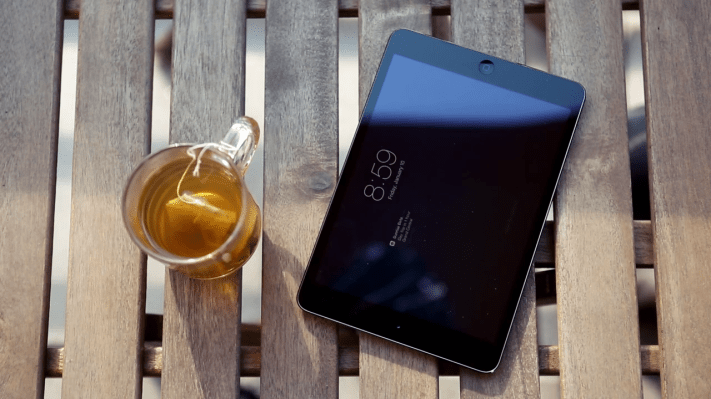Calendar app Sunrise released a major update today, completing two missing pieces of the complicated calendar puzzle — you can now use Sunrise on your iPad with a new design tailored for bigger screens, and there is a much-requested week view to get a better picture of what your schedule looks like. Finally, the company added background updates so that your calendar is always up to date when you open the app.
“We realized that mobile is an even bigger paradigm shift than we originally thought,” co-founder and CEO Pierre Valade told me. “Every other day, I don’t even use a computer anymore — I consider the iPad as a mobile device. People want to feel productive anywhere, and work from their iPad. So that’s why we built Sunrise for the iPad.”
The iPad app is what you would expect if you are an existing Sunrise user. You get a bigger perspective on your calendar with a more detailed month view — you can actually see your events from the month view. Events work exactly the same way, with information pulled from Facebook, LinkedIn and other platforms. The infinite feed is slightly deemphasized with the full screen month view, but there is now this new week view. In fact, the week view makes more sense on the iPad than on the iPhone.
Most of the time, when you open your calendar, you want the answer to a simple question — what’s next? That’s why Sunrise’s feed has always been one of its key features — you open the app and you get a scrollable list of all your next events. But sometimes, you want to schedule a call or a meeting and you need to see more easily when you are available.
That’s where the week view kicks in. If you have a busy schedule with only a few empty zones, or want to see how your week looks at-a-glance, just press the new week view button at the top, and the screen will switch to a very readable week calendar.
Like the month grid, it relies a lot on scrolling, not on tiny text. Sunrise remains clean yet easy to understand. With a finger swipe, you can move around your day feed, week view or month grid. The overall design is very fluid.
[gallery ids="938746,938747,938748,938749,938750"]
When it comes to calendar apps, most of the time you have to fight with your calendar to add information and see what you want. But it’s the opposite with Sunrise. Contrarily to competitor Fantastical which relies heavily on natural language input (“Lunch with Fred at 1pm”), Sunrise now tries to minimize keyboard interactions.
Sunrise was also heavily influenced by popular consumer apps like Snapchat and Frontback — reducing the number of taps is one of the team’s top priorities. That’s why the week view is an important tool as well. Instead of having a traditional and cumbersome iOS time picker, you can now switch to the week view and tap on the right time. It will only save a few seconds, but it greatly contributes to creating a finely tuned user experience. These little details explain why Sunrise is one of TechCrunch’s top apps of 2013.
Reducing the number of taps is one of the team’s top priorities.
Sunrise is only available on iOS for now, and works with Google and iCloud calendars. The company doesn’t hide on its Twitter account that it is working on an Android version and Exchange support. It has raised $2.2 million so far.
The next goal for Sunrise is probably to create a ubiquitous calendar platform. While the app relies heavily on calendar APIs, everything happens on Sunrise’s servers. For example, once you connect your Google calendar, Sunrise only has to interact and sync with its own servers. Choosing a server-side infrastructure will allow the company to easily recreate the same Sunrise experience on multiple operating systems. Sunrise is slowly but surely evolving from a neat iPhone app to a full-fledged calendar platform.
But the company doesn’t forget to polish its original product. One update at a time, Sunrise removes each and every roadblock so that you don’t have any reason left to hold back. Hundreds of thousands of users now use the app. “We think we now have the best calendar on iOS,” Valade said. Yet, apart from new platform support, the same recurring question is also true for Sunrise: what’s next?
